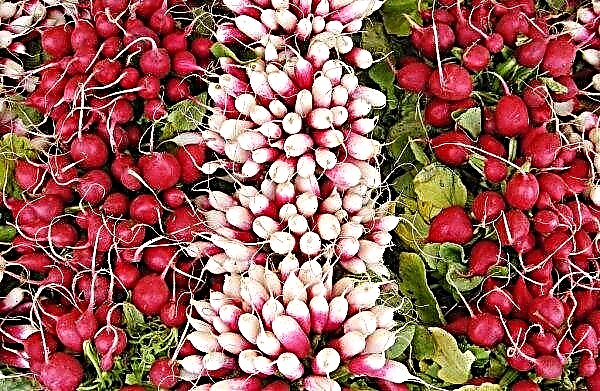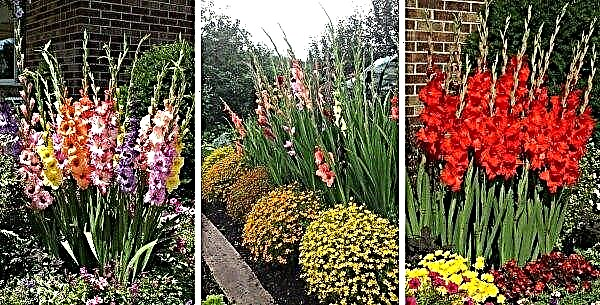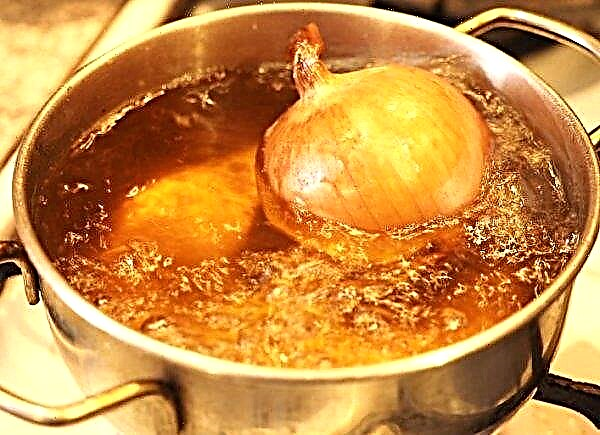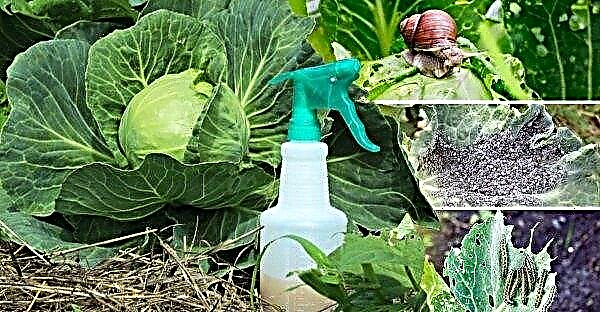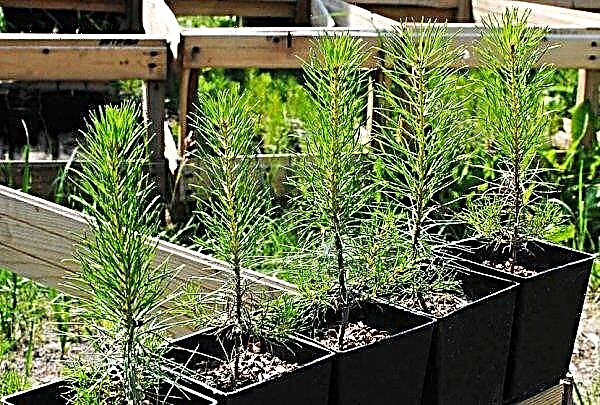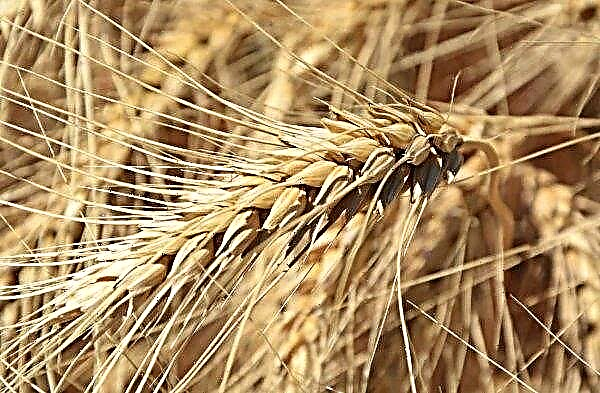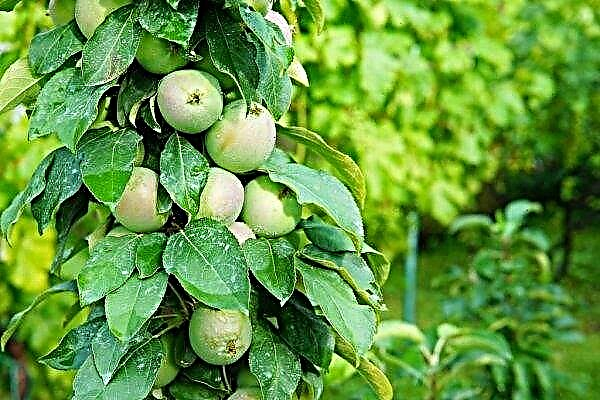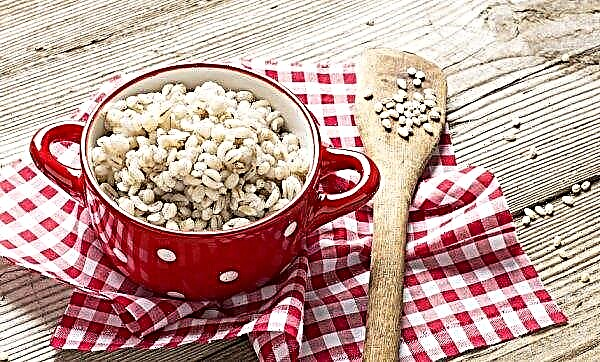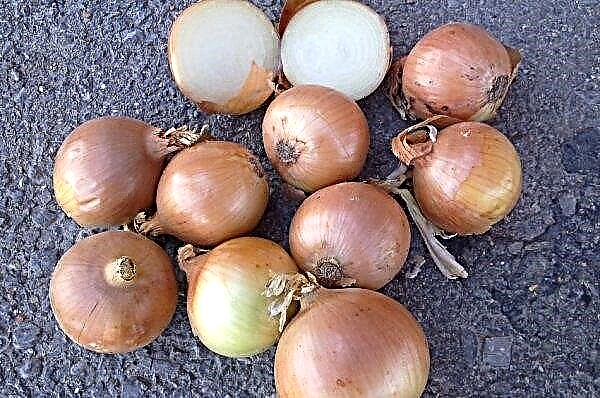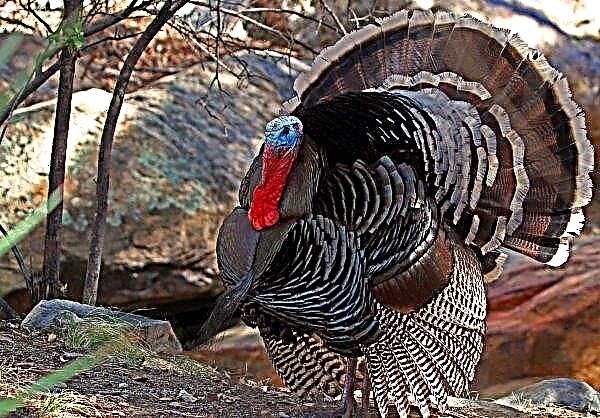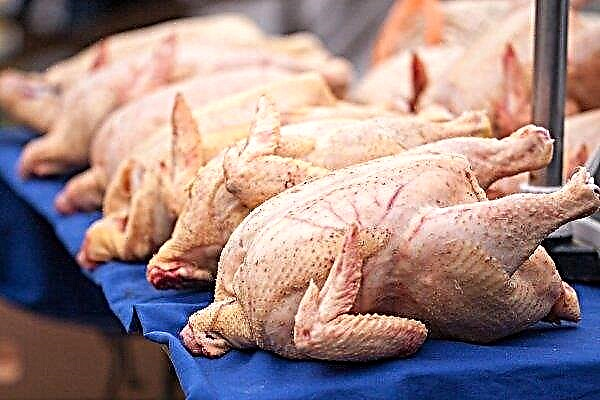Sauerkraut, both white and red cabbage, has long been an integral part of our cuisine - both as an independent dish, and included in many different recipes. This product carries, in addition to a large number of vitamins, many useful substances that the human body especially needs in winter. Sauerkraut has a wide variety of cooking methods. Below are the recipes that include honey - such an ingredient not only adds a refined taste to a familiar snack, but also significantly increases the useful properties of the dish.
Selection and preparation of ingredients
The first thing that will affect the quality of the prepared dish is the right ingredients. Therefore, when choosing a cabbage, you should pay attention to its variety (late and medium-late varieties are optimal), the weight of the vegetable (at least 1 kg), appearance (dense leaves, no signs of rot and darkening in the area of the stump, flattened shape).
Did you know? Cabbage head is, from the point of view of botany, a giant wintering kidney. The year after germination, it bears fruit - small pods.
Starting directly to cooking, it is not recommended to use aluminum utensils. It should be taken into account that the concentration of nutrients in the dish (the larger the shredder, the more useful the product will be) will depend on the size of the shredder, as well as the pickling time (finely chopped cabbage launches juice faster and better, cooking also comes out quick).
Recipes for sauerkraut with honey for the winter
The wide popularity of homemade sauerkraut has led to the formation of many recipes, the features of which made it possible to adapt this dish to any nutrition system (raw food diet, diet, etc.). However, according to numerous reviews, despite the cooking option, one thing remains unchanged - shredded vegetable sheets begin to crunch deliciously.
Classic recipe

3 cans of 1 l20 min
fresh cabbage
2.4-2.5 kg
black peppercorns
10-14 pcs.
Calories (energy value) per 100 g:
 Cabbage is finely chopped with a shredder or knife. Carrots are rubbed on a coarse grater. All ingredients are thoroughly mixed and slightly crushed.
Cabbage is finely chopped with a shredder or knife. Carrots are rubbed on a coarse grater. All ingredients are thoroughly mixed and slightly crushed. Vegetables are transferred to the jar. Each layer is rammed with a hand or pusher and shifted with bay leaf (2-3 pcs.) And peppercorns (4-5 pcs.).
Vegetables are transferred to the jar. Each layer is rammed with a hand or pusher and shifted with bay leaf (2-3 pcs.) And peppercorns (4-5 pcs.).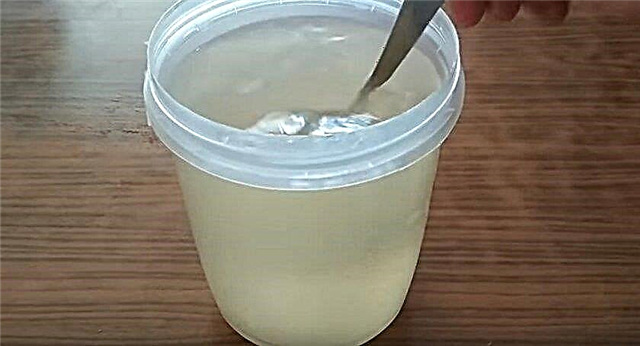 Salt and honey are added to cold boiled water and mixed until they dissolve. Then the honey brine is carefully poured into a jar of vegetables.
Salt and honey are added to cold boiled water and mixed until they dissolve. Then the honey brine is carefully poured into a jar of vegetables. The can is placed in a deep container into which juice will drain during fermentation.
The can is placed in a deep container into which juice will drain during fermentation. The jar is covered with gauze or a lid with holes and left at room temperature for 1 day.
The jar is covered with gauze or a lid with holes and left at room temperature for 1 day.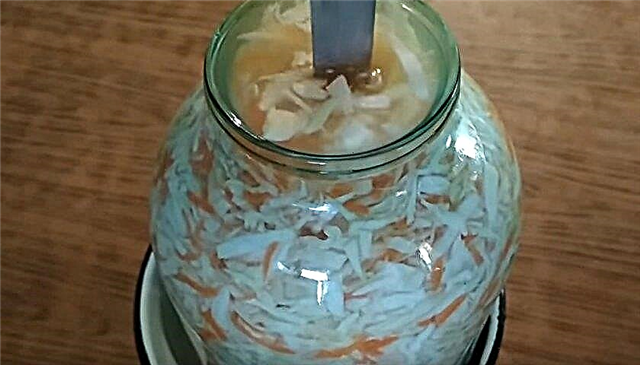 During this time, salting is pierced several times with a knife or a wooden skewer to the very bottom - this will help to release excess carbon dioxide. After 24 hours, the tank is exposed to cold.
During this time, salting is pierced several times with a knife or a wooden skewer to the very bottom - this will help to release excess carbon dioxide. After 24 hours, the tank is exposed to cold.
Video recipe
Important! To fill a 1 liter jar, you will need about 1 kg of slaw.
With apples

3 cans of 1 l15 min
Calories (energy value) per 100 g:
 Cabbage is finely chopped, carrots are rubbed on a coarse grater. All ingredients are mixed and slightly crushed.
Cabbage is finely chopped, carrots are rubbed on a coarse grater. All ingredients are mixed and slightly crushed. Chopped vegetables should be salted and mixed with honey.
Chopped vegetables should be salted and mixed with honey. The apple is washed and cut into 4 parts. Apple slices and then chopped vegetables layered at the bottom of the prepared can. Each layer is crushed.
The apple is washed and cut into 4 parts. Apple slices and then chopped vegetables layered at the bottom of the prepared can. Each layer is crushed. The jar is put in a deep dish for 3 days, during which vegetables should be pierced with a wooden skewer to exit the accumulated carbon dioxide.
The jar is put in a deep dish for 3 days, during which vegetables should be pierced with a wooden skewer to exit the accumulated carbon dioxide.
Video recipe
With sweet bell pepper

4 cans of 1 l25 min
Calories (energy value) per 100 g:
 Cabbage is finely chopped, carrots are rubbed on a coarse grater, pepper is cut into thin plates.
Cabbage is finely chopped, carrots are rubbed on a coarse grater, pepper is cut into thin plates. Vegetables are gently mixed (without crushing) and stacked tightly in jars. Each layer is rammed with a pusher or a hand.
Vegetables are gently mixed (without crushing) and stacked tightly in jars. Each layer is rammed with a pusher or a hand. Apples are washed and cut into 4 parts. In the middle of each jar, 2-3 slices are laid out.
Apples are washed and cut into 4 parts. In the middle of each jar, 2-3 slices are laid out. On top of each can is poured 1 tbsp. l salt and filled with cold water.
On top of each can is poured 1 tbsp. l salt and filled with cold water. Cans are placed in deep dishes, and on top they are covered with lids, the diameter of which is less than the diameter of the can. On top of the lid exposed a little oppression.
Cans are placed in deep dishes, and on top they are covered with lids, the diameter of which is less than the diameter of the can. On top of the lid exposed a little oppression. Banks cost 2 days at room temperature. After this time, saline is poured from each container and mixed with honey and salt (1 tbsp each), after which it is poured back into the jar.
Banks cost 2 days at room temperature. After this time, saline is poured from each container and mixed with honey and salt (1 tbsp each), after which it is poured back into the jar. Banks are covered with plastic lids and exposed in a cool place.
Banks are covered with plastic lids and exposed in a cool place.
Video recipe
Important! The use of vegetable oil in salads with sauerkraut is not only allows soften the taste of the dish, but also contributes to better absorption of vegetables in the body.
Honey Filled

3 cans of 1 l25 min
Calories (energy value) per 100 g:
 Cabbage is finely chopped, carrots are rubbed on a coarse grater, pepper is cut into thin plates.
Cabbage is finely chopped, carrots are rubbed on a coarse grater, pepper is cut into thin plates. Vegetables are gently mixed, salted and crushed until salt is released.
Vegetables are gently mixed, salted and crushed until salt is released. The ingredients are poured into a large container and exposed under oppression. In this form, they stand for 2 days at room temperature.
The ingredients are poured into a large container and exposed under oppression. In this form, they stand for 2 days at room temperature. Honey is dissolved in water for pouring, after which the solution is poured into cabbage.
Honey is dissolved in water for pouring, after which the solution is poured into cabbage. Salting is transferred to pre-prepared banks and is set for 1 day.
Salting is transferred to pre-prepared banks and is set for 1 day.
Video recipe
Features of storage of blanks
The shelf life of sauerkraut depends on two main factors: the conditions and method of storage.
This product is best stored:
- in wooden containers at a temperature of -1 ... + 3 ° C (shelf life - six months);
- in enameled dishes at a temperature of +8 ... + 10 ° С (storage period - no more than 5 days);
- in glass at a temperature of -1 ... + 4 ° С (shelf life - no more than 14 days);
- in film +2 ... + 4 ° С (no more than 4-5 days).
Did you know? The composition of the head of white cabbage, despite all its tangible strength, contains more than 90% of water.
Sauerkraut has a lot of variations and cooking methods. Focusing on personal taste preferences, you can use this healthy and healing product all winter, replenishing all the necessary vitamins and minerals needed by the body of both an adult and a child, especially in winter.

 Cabbage is finely chopped with a shredder or knife. Carrots are rubbed on a coarse grater. All ingredients are thoroughly mixed and slightly crushed.
Cabbage is finely chopped with a shredder or knife. Carrots are rubbed on a coarse grater. All ingredients are thoroughly mixed and slightly crushed. Vegetables are transferred to the jar. Each layer is rammed with a hand or pusher and shifted with bay leaf (2-3 pcs.) And peppercorns (4-5 pcs.).
Vegetables are transferred to the jar. Each layer is rammed with a hand or pusher and shifted with bay leaf (2-3 pcs.) And peppercorns (4-5 pcs.). Salt and honey are added to cold boiled water and mixed until they dissolve. Then the honey brine is carefully poured into a jar of vegetables.
Salt and honey are added to cold boiled water and mixed until they dissolve. Then the honey brine is carefully poured into a jar of vegetables. The can is placed in a deep container into which juice will drain during fermentation.
The can is placed in a deep container into which juice will drain during fermentation. The jar is covered with gauze or a lid with holes and left at room temperature for 1 day.
The jar is covered with gauze or a lid with holes and left at room temperature for 1 day. During this time, salting is pierced several times with a knife or a wooden skewer to the very bottom - this will help to release excess carbon dioxide. After 24 hours, the tank is exposed to cold.
During this time, salting is pierced several times with a knife or a wooden skewer to the very bottom - this will help to release excess carbon dioxide. After 24 hours, the tank is exposed to cold. Cabbage is finely chopped, carrots are rubbed on a coarse grater. All ingredients are mixed and slightly crushed.
Cabbage is finely chopped, carrots are rubbed on a coarse grater. All ingredients are mixed and slightly crushed. Chopped vegetables should be salted and mixed with honey.
Chopped vegetables should be salted and mixed with honey. The apple is washed and cut into 4 parts. Apple slices and then chopped vegetables layered at the bottom of the prepared can. Each layer is crushed.
The apple is washed and cut into 4 parts. Apple slices and then chopped vegetables layered at the bottom of the prepared can. Each layer is crushed. The jar is put in a deep dish for 3 days, during which vegetables should be pierced with a wooden skewer to exit the accumulated carbon dioxide.
The jar is put in a deep dish for 3 days, during which vegetables should be pierced with a wooden skewer to exit the accumulated carbon dioxide. Cabbage is finely chopped, carrots are rubbed on a coarse grater, pepper is cut into thin plates.
Cabbage is finely chopped, carrots are rubbed on a coarse grater, pepper is cut into thin plates. Vegetables are gently mixed (without crushing) and stacked tightly in jars. Each layer is rammed with a pusher or a hand.
Vegetables are gently mixed (without crushing) and stacked tightly in jars. Each layer is rammed with a pusher or a hand. Apples are washed and cut into 4 parts. In the middle of each jar, 2-3 slices are laid out.
Apples are washed and cut into 4 parts. In the middle of each jar, 2-3 slices are laid out. On top of each can is poured 1 tbsp. l salt and filled with cold water.
On top of each can is poured 1 tbsp. l salt and filled with cold water. Cans are placed in deep dishes, and on top they are covered with lids, the diameter of which is less than the diameter of the can. On top of the lid exposed a little oppression.
Cans are placed in deep dishes, and on top they are covered with lids, the diameter of which is less than the diameter of the can. On top of the lid exposed a little oppression. Banks cost 2 days at room temperature. After this time, saline is poured from each container and mixed with honey and salt (1 tbsp each), after which it is poured back into the jar.
Banks cost 2 days at room temperature. After this time, saline is poured from each container and mixed with honey and salt (1 tbsp each), after which it is poured back into the jar. Banks are covered with plastic lids and exposed in a cool place.
Banks are covered with plastic lids and exposed in a cool place. Cabbage is finely chopped, carrots are rubbed on a coarse grater, pepper is cut into thin plates.
Cabbage is finely chopped, carrots are rubbed on a coarse grater, pepper is cut into thin plates. Vegetables are gently mixed, salted and crushed until salt is released.
Vegetables are gently mixed, salted and crushed until salt is released. The ingredients are poured into a large container and exposed under oppression. In this form, they stand for 2 days at room temperature.
The ingredients are poured into a large container and exposed under oppression. In this form, they stand for 2 days at room temperature. Honey is dissolved in water for pouring, after which the solution is poured into cabbage.
Honey is dissolved in water for pouring, after which the solution is poured into cabbage. Salting is transferred to pre-prepared banks and is set for 1 day.
Salting is transferred to pre-prepared banks and is set for 1 day.